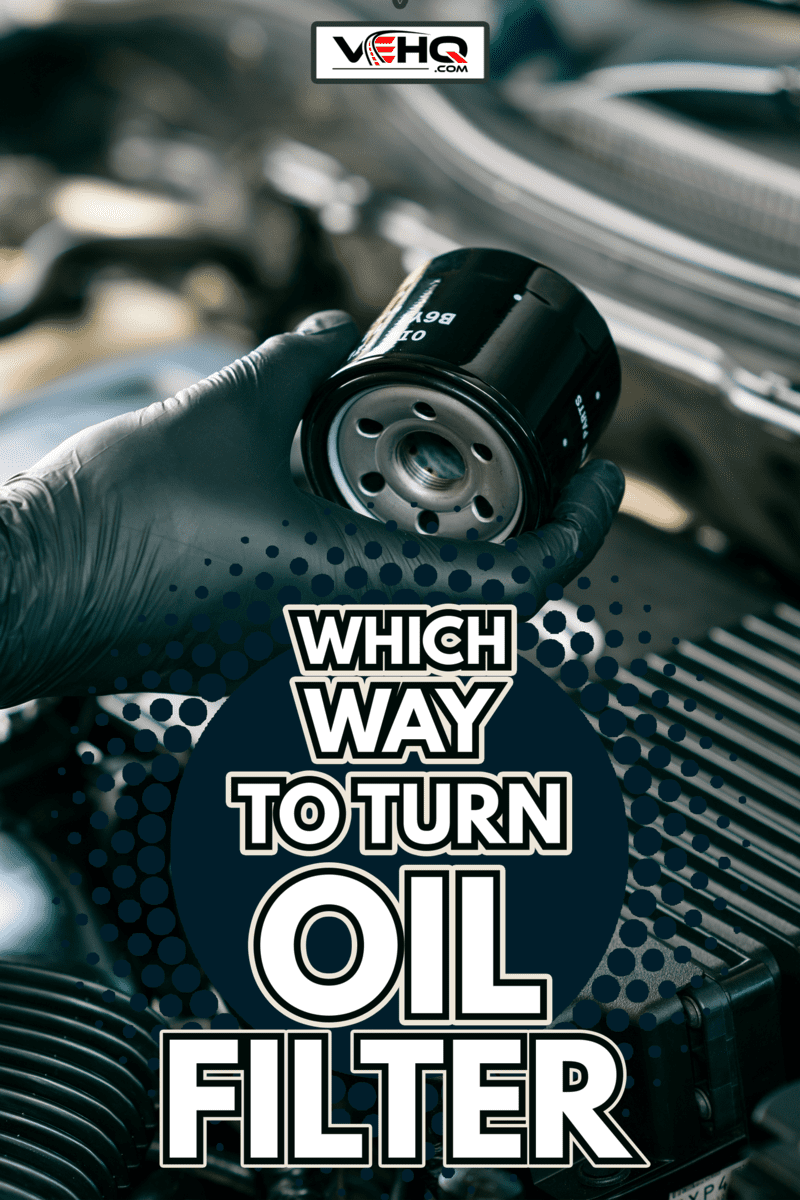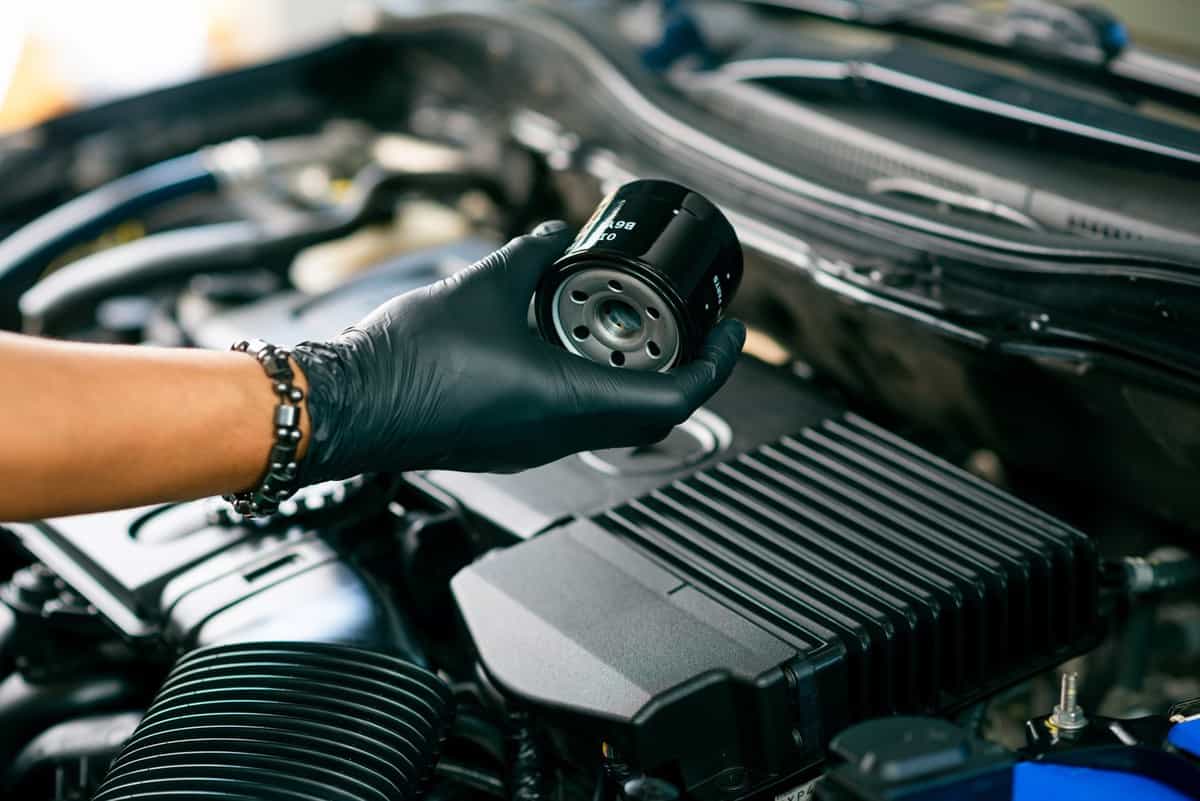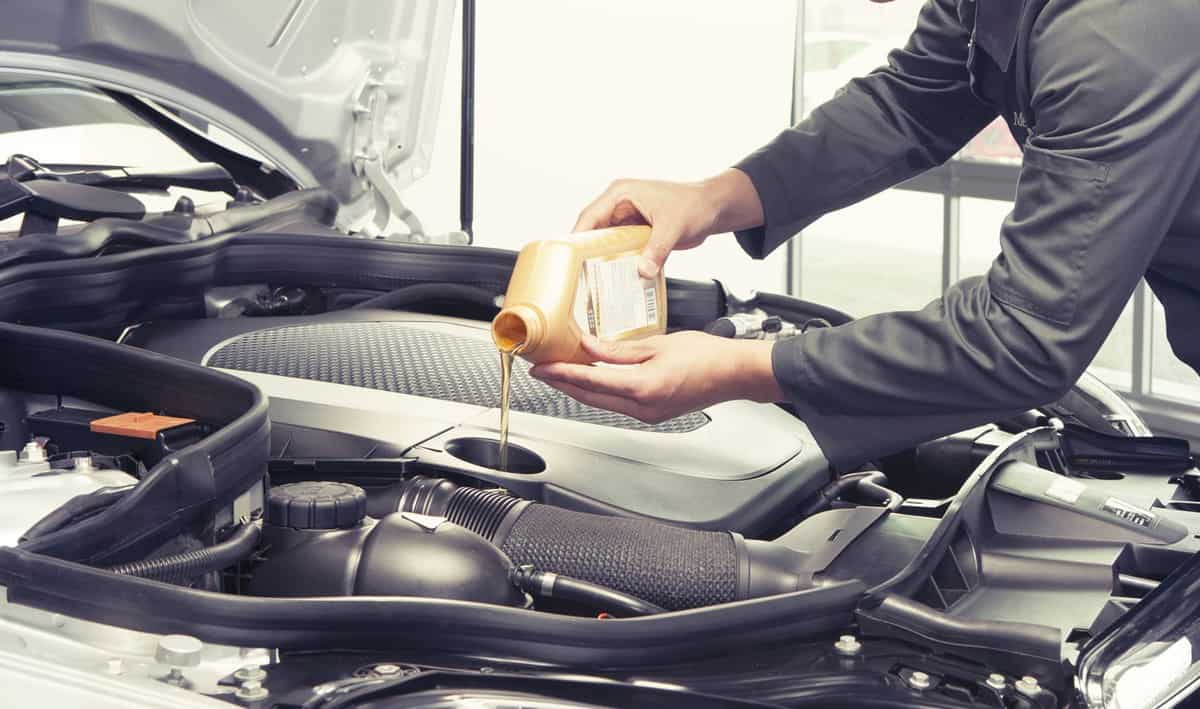There's nothing more rewarding than performing car maintenance yourself. Thankfully, changing the oil is a fairly simple task that many vehicle owners choose to do themselves. But if this is your first time changing your own oil, you might be wondering which way to turn the oil filter to remove the old one and install the new one. For your convenience, we did the research to bring you the answer.
To remove the old oil filter, turn it counterclockwise. To install the new oil filter, turn it clockwise.
If you still have some additional questions about the process, don't worry. In this post, we'll discuss the topic in more detail. We'll also tell you how to get an oil filter off by hand, how to loosen a tight oil filter, whether hand tightening an oil filter is good enough, whether you should pre-fill an oil filter, and more. Without further ado, let's get into it!

How To Remove And Install An Oil Filter
Don't let the oil filter intimidate you. The process to remove the old filter and install the new one is quite simple. But before we get to that, it's important to ensure that all of the oil has been drained first. Take a look at this quick YouTube tutorial that explains how to do just that.
Once you remove the oil pan drain plug, it's recommended to allow the old oil to drain for five minutes before proceeding with the process. Otherwise, oil will come pouring out of the oil filter area when you go to remove it. Once all of the oil has drained, you're ready to remove the oil filter.
If you're facing the base of the oil filter (the relatively flat part of the filter that sticks out from the engine area), simply turn it counterclockwise.
If you're more of a visual learner, take a look at this YouTube tutorial. If you're only concerned with the part of the process pertaining to the oil filter, go ahead and skip to 1:45.
In the video, you can see that the old filter is turned counterclockwise, and the new filter is turned clockwise.
Read more: Why Do Cars Need Oil? [and What Happens If You Don’t Change Oil]
How Do You Get An Oil Filter Off By Hand?

You've no doubt seen tools designed to remove oil filters (such as the one used in the previous video). Though these tools can be quite useful, they aren't required; you can remove an oil filter by hand.
Depending on how tight the filter is, you might be able to simply turn it with a bit of elbow grease. But if the filter is extremely tight or covered in oil (or both), simple elbow grease might not be enough.
A simple method that has proven quite effective is to simply cover the filter in a paper towel when you go to remove it. If the filter is oily, it's a good idea to thoroughly wipe it down with a paper towel first. The paper towel will help you better grip the oil filter, giving you just enough leverage to get it off.
How Do You Loosen A Tight Oil Filter?

Try as you might, sometimes the oil filter will be too tight to remove the old-fashioned way. If you find yourself unable to remove a pesky oil filter with the aforementioned tip, don't fret. There are several ways you can loosen an overly tight oil filter. This is where those tools mentioned earlier come in handy.
Use Oil Filter Pliers
Oil filter pliers are just like normal pliers except for the fact that the tip is specifically designed to grip onto oil filters. To remove an oil filter with these pliers, simply clamp down on the filter and turn counterclockwise. The long handle will give you the leverage needed to remove even the tightest filters.
Click here to see these oil filter pliers on Amazon.
Use An Oil Filter Swivel Wrench
An oil filter swivel wrench works in a similar fashion to oil filter pliers except for the fact that a swivel wrench is generally able to completely wrap around the filter, slightly increasing the mechanical advantage.
Click here to see this oil filter swivel wrench on Amazon.
Use An Oil Filter Socket Adapter
The two methods listed above are great, but depending on the location of your oil filter, they might not be viable.
If your oil filter is in a particularly hard-to-reach location, there might not be room around it for pliers or a swivel wrench. This is where an oil filter socket adapter comes in handy.
An adjustable oil filter socket adapter/wrench will allow you to remove any oil filter. Simply pair it with the appropriately-sized breaker bar or socket wrench, and you're good to go!
Click here to see this oil filter socket adapter on Amazon.
Is Hand Tightening An Oil Filter Enough?

If this is your first time doing an oil change yourself, you're probably wondering if hand tightening the oil filter is sufficient. After all, a loose oil filter could mean oil loss, and that could lead to catastrophic engine damage.
But you can rest assured that hand tightening the oil filter is enough. In fact, it isn't recommended to tighten it any other way. Simply turn the new oil filter clockwise until it is as tight as you can get it by hand. Any tighter and the gasket can become damaged.
Once the oil change is complete, start the car and observe the ground beneath the oil filter for a minute or so. If no oil leaks, you should be in good shape.
It's also a good idea to periodically confirm that your oil filter is nice and snug in between oil changes. Wait until the engine bay is cool, and give the oil filter a slight twist to verify that it hasn't come loose.
Can I Use The Same Oil Filter Twice?
You might be tempted to save a bit of money by reusing the old oil filter. Surely doing so would be fine, right? In general, it isn't recommended to use the same oil filter twice. Simply put, the engine oil and filter should be changed at the same time.
The purpose of the oil filter is to do exactly what its name implies—filter impurities and contaminants from the oil each time it completes a circuit around the engine. A clogged oil filter can lead to catastrophic engine problems, so it's generally recommended to change the filter as part of each oil change.
Should You Pre-fill An Oil Filter?

If you've been researching the oil change process, you've no doubt seen the recommendation to pre-fill the oil filter. Pre-filling the oil filter simply means pouring oil into the new filter before installing it.
The thought process behind this practice is that it ensures adequate oil pressure in the system when the vehicle is started for the first time following the oil/filter change. If the filter isn't pre-filled, there is theoretically a brief period in which there is a slight lack of oil pressure as the filter fills with oil.
But in reality, pre-filling the oil filter isn't necessary for a couple of reasons.
First, you're bound to make a huge mess trying to install a pre-filled oil filter. Depending on where your oil filter is located, it will be next to impossible to install a pre-filled filter without spilling it. For this reason alone, the theoretical benefit isn't worth the trouble.
In addition, pre-filling the filter can make measuring the appropriate amount of oil for your engine more difficult, especially if you end up spilling some of it (which you certainly will).
In other words, it's impossible to know how much oil spills from the filter, so you won't know for sure how much oil is actually in the engine.
On the other hand, if you don't pre-fill the filter with oil, you can pour the correct amount of oil into the top of the engine and rest assured that your engine has the exact amount of oil the manufacturer recommends.
In Closing
We hope you can now approach the oil change process with confidence. The oil filter is a critical component, so it's important to get it right.
Before you go, be sure to take a look at these related guides:



